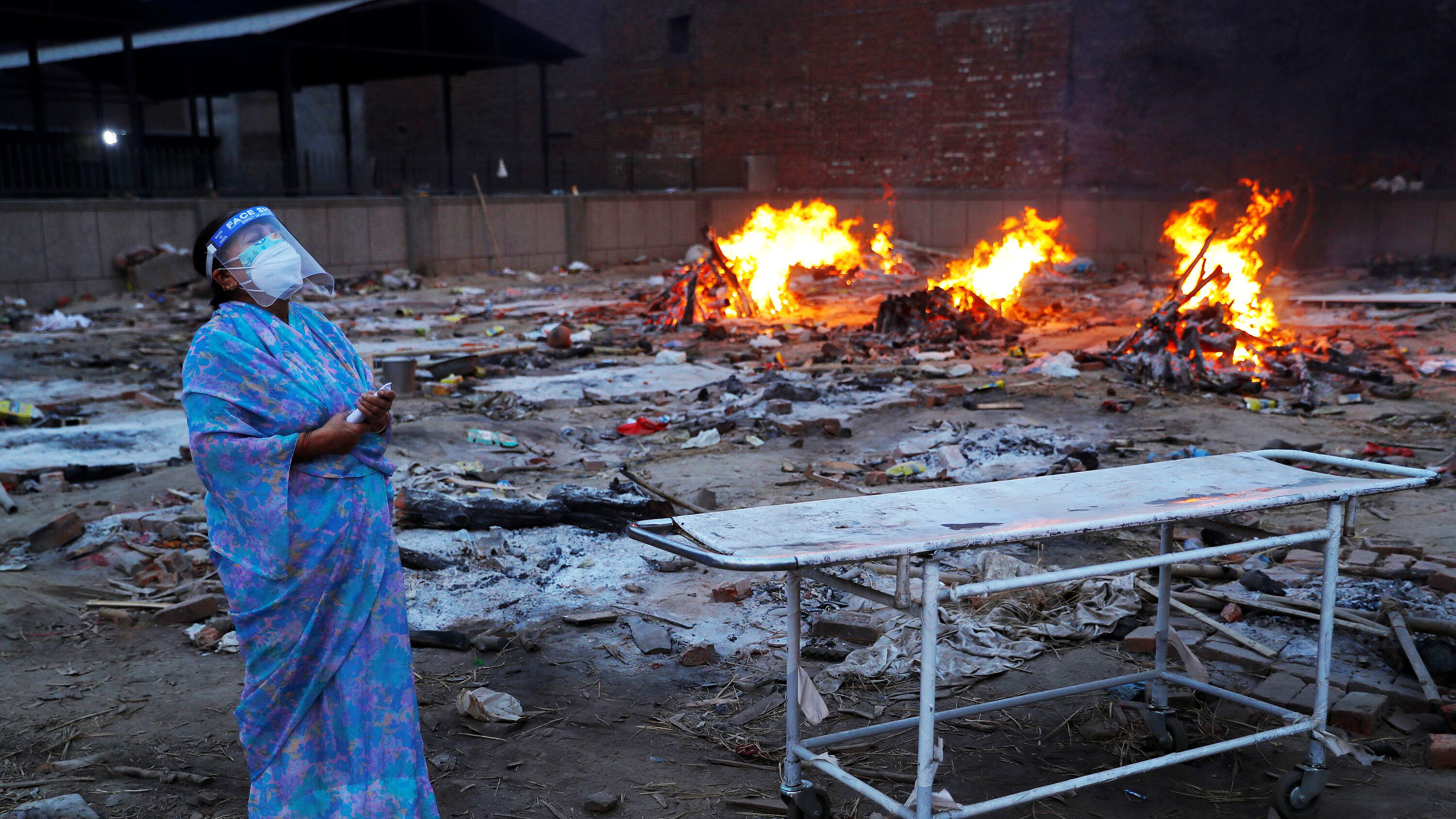Analysis: The COVID-19 Situation In Asia And The Potential Impact On India

Table of Contents
The COVID-19 Landscape in Asia: A Regional Overview
Varying Responses and Success Rates
Asia's response to the COVID-19 pandemic varied dramatically, reflecting differences in healthcare infrastructure, political systems, and societal norms. China, for instance, implemented stringent lockdowns and aggressive contact tracing, initially suppressing the virus effectively. South Korea, on the other hand, focused on widespread testing and contact tracing, minimizing the need for widespread lockdowns. India's initial response was a mix of strategies, with varying degrees of success across different states.
-
China: Initially highly effective in containing the virus, but the zero-COVID policy significantly impacted the economy and resulted in social unrest later in the pandemic. Data from the National Health Commission of China (though subject to scrutiny) shows a drastic reduction in cases following initial lockdowns. Economic growth slowed significantly.
-
South Korea: Successfully contained the virus through widespread testing and robust contact tracing, minimizing the economic disruption compared to many other nations. Data from the Korea Centers for Disease Control and Prevention shows consistently lower mortality rates compared to many other Asian countries.
-
India: Experienced multiple devastating waves, highlighting challenges in healthcare infrastructure and vaccine distribution. Data from the Indian Council of Medical Research revealed a significant surge in cases during specific waves, placing enormous strain on the healthcare system.
-
Other Asian Nations: Various other countries in Southeast Asia, East Asia, and the Middle East adopted different strategies with varying levels of success, illustrating the complexities of managing a global pandemic.
The Emergence of New Variants
The emergence of new COVID-19 variants in Asia poses an ongoing threat. The Delta variant, initially detected in India, spread rapidly across the continent, while Omicron variants also caused significant waves of infections. These variants presented challenges due to increased transmissibility and, in some cases, reduced vaccine efficacy.
-
Delta Variant: Originating in India, this variant spread rapidly across Asia, causing significant surges in many countries and impacting India's already strained healthcare system.
-
Omicron Variants: Various Omicron subvariants emerged in different parts of Asia, demonstrating the virus's ability to mutate and evade existing immunity.
-
Impact on India: The emergence of new variants in other Asian countries poses a constant risk of new waves of infection in India, necessitating ongoing vigilance and adaptive measures. These variants continue to impact the effectiveness of existing vaccines.
Economic Interdependence and its Impact
Supply Chain Disruptions
Asia's extensive economic interdependence means that disruptions in one country can have significant consequences for others. The pandemic and resulting restrictions in various Asian countries disrupted supply chains, affecting India's imports and exports across multiple sectors.
-
Pharmaceuticals: Disruptions in the supply of raw materials and active pharmaceutical ingredients from China and other Asian nations affected India's pharmaceutical industry.
-
Technology: The pandemic significantly disrupted global electronics supply chains, impacting India's technology sector, which relies on imports of components from countries like China and Vietnam.
-
Economic Consequences: Supply chain disruptions led to increased costs, production delays, and shortages, impacting various sectors of the Indian economy and impacting overall GDP growth.
Tourism and Travel Restrictions
The pandemic severely impacted the tourism sector globally, and India, with its significant reliance on Asian tourist markets, was severely affected. Travel restrictions imposed by various Asian countries led to a dramatic decline in tourist arrivals.
-
Revenue Losses: The decline in tourism significantly impacted India's tourism revenue, affecting jobs and related businesses.
-
Long-Term Impacts: The pandemic's prolonged impact on tourism may lead to long-term consequences for the sector, requiring strategic interventions for recovery.
Healthcare System Preparedness and Strain
Comparing Healthcare Infrastructure
Comparing India's healthcare infrastructure with other Asian nations reveals both strengths and weaknesses in pandemic preparedness. While India has a vast healthcare network, challenges remain regarding bed capacity, medical personnel, and equipment availability, particularly in rural areas, compared to some more developed Asian nations.
-
Bed Capacity: The pandemic highlighted the shortage of ICU beds and ventilators in many parts of India.
-
Medical Personnel: India faces a shortage of doctors and nurses, particularly in rural areas, which was exacerbated during the pandemic.
-
Medical Equipment: Access to essential medical equipment, like ventilators and oxygen concentrators, was uneven across the country, highlighting infrastructure gaps.
Vaccine Distribution and Access
India's vaccine rollout strategy, while initially ambitious, faced various challenges. Logistical hurdles, vaccine hesitancy, and variations in vaccine uptake across different states impacted the pace of vaccination compared to some other Asian nations.
-
Vaccination Rates: Comparing vaccination rates in India with countries like South Korea and Singapore reveals disparities in achieving widespread vaccination coverage.
-
Challenges: Issues such as vaccine hesitancy, logistical challenges in reaching remote areas, and concerns about vaccine efficacy contributed to slower than desired vaccination rates in specific regions.
Conclusion
The COVID-19 situation in Asia has significantly impacted India's economy, healthcare system, and overall societal wellbeing. The pandemic highlighted the interconnectedness of Asian economies, the vulnerability of supply chains, and the strain on healthcare infrastructure even in large nations. The emergence of new variants in Asia poses a continuing threat to India, necessitating proactive measures. The analysis underlines the critical need for robust pandemic preparedness measures to mitigate the impact of future health crises. Staying informed about the evolving COVID-19 impact on India and the Asian COVID-19 situation is crucial, and we encourage readers to consult reliable sources like the WHO and national health ministries for updates and to advocate for improved India's pandemic preparedness.

Featured Posts
-
 Bannatyne Supports Childrens Charity In Morocco A Life Changing Initiative
May 31, 2025
Bannatyne Supports Childrens Charity In Morocco A Life Changing Initiative
May 31, 2025 -
 Ist Klimaschutz Am Bodensee Noch Sinnvoll Langzeitperspektiven
May 31, 2025
Ist Klimaschutz Am Bodensee Noch Sinnvoll Langzeitperspektiven
May 31, 2025 -
 Tain Offers Temporary Space To Rogart Veterinary Practice After Fire
May 31, 2025
Tain Offers Temporary Space To Rogart Veterinary Practice After Fire
May 31, 2025 -
 Ne Ohio Weather Alert Showers And Thunderstorms Forecast
May 31, 2025
Ne Ohio Weather Alert Showers And Thunderstorms Forecast
May 31, 2025 -
 Decouvrez Le Festival De La Camargue A Port Saint Louis Du Rhone
May 31, 2025
Decouvrez Le Festival De La Camargue A Port Saint Louis Du Rhone
May 31, 2025
